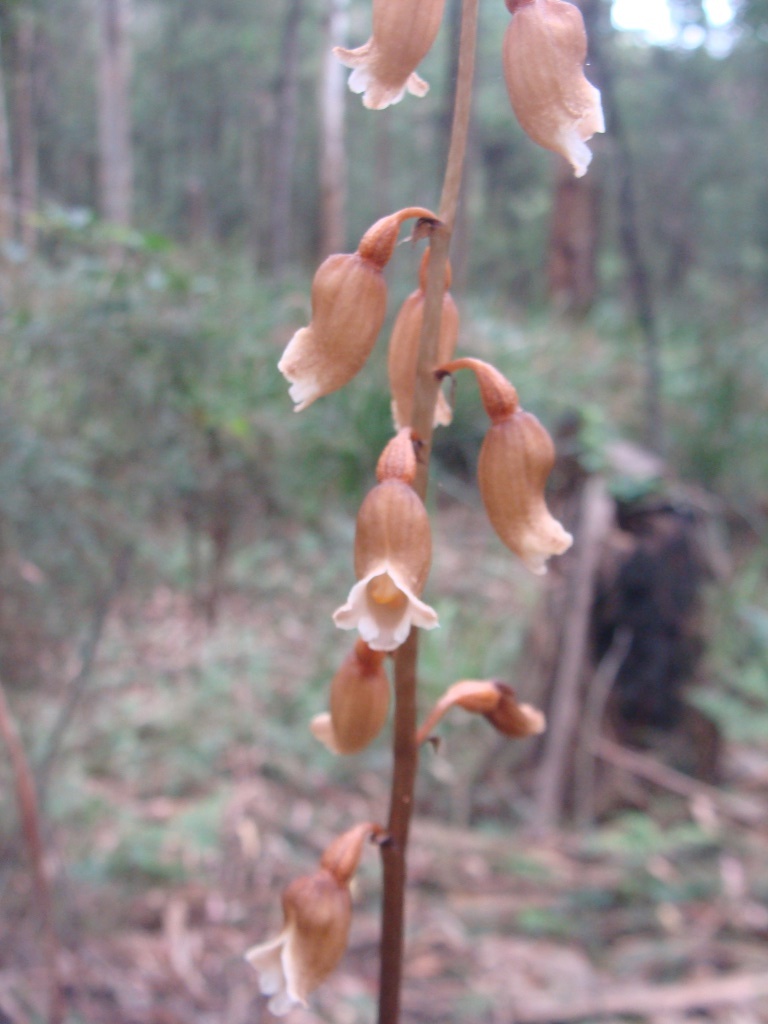Gastrodia procera
G.W.CarrRobust herb. Stem erect throughout, dark brown, 26–100 cm high, rarely more. Flowers 8–75, erect at first, then drooping, bell-shaped, 20–25 mm long (excluding ovary), cinnamon brown, white towards apices, exterior surface often very rough; subtending bracts about as long as pedicels; pedicel (excluding ovary) 3–10 mm long; ovary obconical. Labellum 14–17 mm long, 5–8 mm wide, lamina with 2 raised, yellow to orange, much crested, widely divergent calli which merge above the lateral lobes and continue, somewhat more elevated, to just below apex. Fruits 10–20 mm long, pale brown. Flowers Dec.–Jan. (where growing with G. sesamoides, its peak flowering time is 3–4 weeks later than that species).
GipP, OtP, CVU, GGr, NIS, EGL, EGU, HSF, HNF, OtR, Strz, VAlp. Also Qld, NSW, Tas. Naturalized in South Africa. Widespread and common (but less so than G. sesamoides) in higher rainfall moist to wet forest and woodland.
Gastrodia procera plants resemble those of G. sesamoides, but are generally more robust, sometimes reaching over 1 m high. In addition to the features used in the key, G procera also has larger flowers with a cinnamon brown rather than light grey-brown exterior, more widely divergent labellum callus (in the proximal part of labellum) and generally larger, paler fruits.
Entwisle, T.J. (1994). Orchidaceae. In: Walsh, N.G.; Entwisle, T.J., Flora of Victoria Vol. 2, Ferns and Allied Plants, Conifers and Monocotyledons, pp. 740–901. Inkata Press, Melbourne.
 Spinning
Spinning


